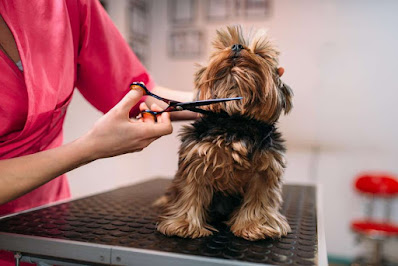Your puppy or young adult dog may not know his new name when he comes into your house. When you say his name, the dog must understand that you want him to pay attention to you. And the most effective way to do this is to teach him to equate his name with something good.
What's in a Name?
You will use positive reinforcement training to teach your dog to react to whatever name you give him by associating the name with something nice. Obtain a couple of thin, fluffy treats that your dog can chew and swallow fast. It's still a good idea to get a clicker in hand. Begin with a private, comfortable space, such as your living room.
Do the following:
What if the dog isn't glaring at you, so utter the word loudly and cheerfully. As soon as your dog looks at you, use a clicker or a word to signal that this is the correct answer, then promptly reward your dog with a treat. Repeat this procedure many times during the day.
If you're having trouble getting your dog to answer, consider moving to a less noisy and smaller location, or switching is treated to something more valuable to the dog, such as small pieces of cooked chicken or turkey meatballs, while still praising and rewarding.
Say his name as you walk through the room. Or, instead of turning toward you, say his name and wait until he looks at your face before offering the treat. When you consistently get the affection you want, attempt occasional treats but still compliment verbally. Increase the number of distractions and transfer the lessons outside.
Since consistency has been the key you can reiterate this behavior repeatedly until you have an automatic and strong response. Your dog will eventually answer to his name in response to your affection and affection, and rewards will be unnecessary.
Refrain from Negative Associations
Avoid using the dog's name in conjunction with offensive words, since this will transform a positive response to his name into a negative one. Since owners sometimes pair their dog's name with vocal corrections, often dogs dislike the sound of their own name. What you really want is for a dog to equate the sound of his name with something positive.
- Off-leash training should not be done in a wide environment where your dog can wander off and get distracted; it is preferable to keep your dog on a leash. Starting indoors, where there are fewer obstacles, is potentially the better option.
- If you utter the dog's name so many times, she will start to expect you to repeat it before she will give you the time of day. Say her name once and then give her the treat if she reacts fast.
- Don't start calling your dog's name if she doesn't answer right away. Instead, take a stroll with her away from whatever is bothering her and try again, or move to a location with lesser obstacles. Just introduce the preparation in more distracting places until you've regularly gotten a flawless answer.
- Before you teach your dog an order, don't say her name. You should be able to say "sit," "stay," or "down" without saying the commands name each time. Give the dog the reward right away if she reacts easily. Have a note of the action right away.







No comments:
Post a Comment